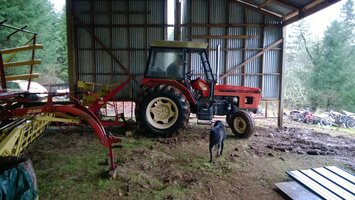Drain the engine
oil .
Remove the oil pan; you should do this anyway to check the crankshaft's mass balance weights for tightness and also the axial bearing shells (i.e., the crankshaft's axial play).
Drain the coolant (from the engine and radiator).
Open the connecting rod bearings and remove the lower connecting rod bearing housing (CAUTION - make sure that the connecting rod bearing housing from cylinder 1 also reaches connecting rod 1 and that its installation position is exactly the same as when removed!!!)
Then pull out the cylinder liners with a cylinder liner puller to access the sealing rings.
Now clean, from top to bottom. First, meticulously clean the upper seat of the cylinder liners in the engine block (check with an LED light, so don't damage the metal when cleaning!!!) and then the block and the lower bushing seat where the rubber rings are supposed to seal. Check here for cavitation damage as well.
If (if!!) the cylinder liners still show a cross-ground finish, reinstalling them makes sense after checking them for cracks (crack detection spray) and cavitation damage.
Otherwise, it's better to install new piston/liner sets right away, paying attention to quality.
If the old cylinder liners are to be reinstalled, then reinstall them and the pistons in exactly the same position as when they were removed. The same applies to the piston rings and the pistons! The reason for this is that worn cylinder liners usually gradually become oval on the inside and no longer round. Therefore, you can't simply install new piston rings on liners that have been running for a while if you want them to be any good.
For the connecting rod bearings, I would probably install new connecting rod bearing shells, and you'll need new connecting rod bearing bolts and nuts, as these are expansion bolts and should only be used once. For tightening torques, see the workshop
manual or our
FAQ .
For torque and tightening sequence information for the heads, see the workshop manual or our
FAQ .
There are certainly other things to consider, but I'm not sure if it makes sense to write everything here, since it's already in the workshop manual. Perhaps I should only write about things that aren't in the manual in the future...


